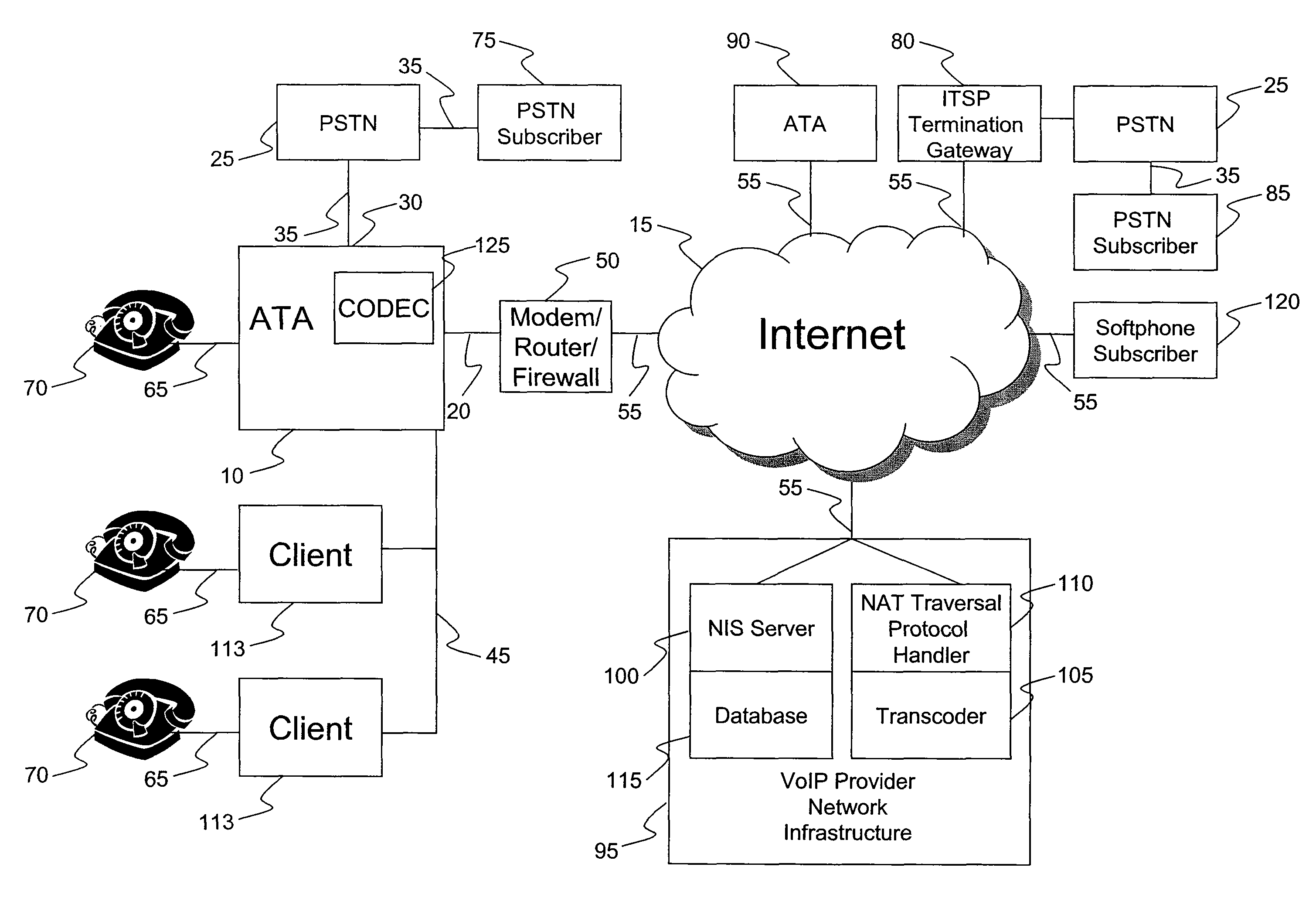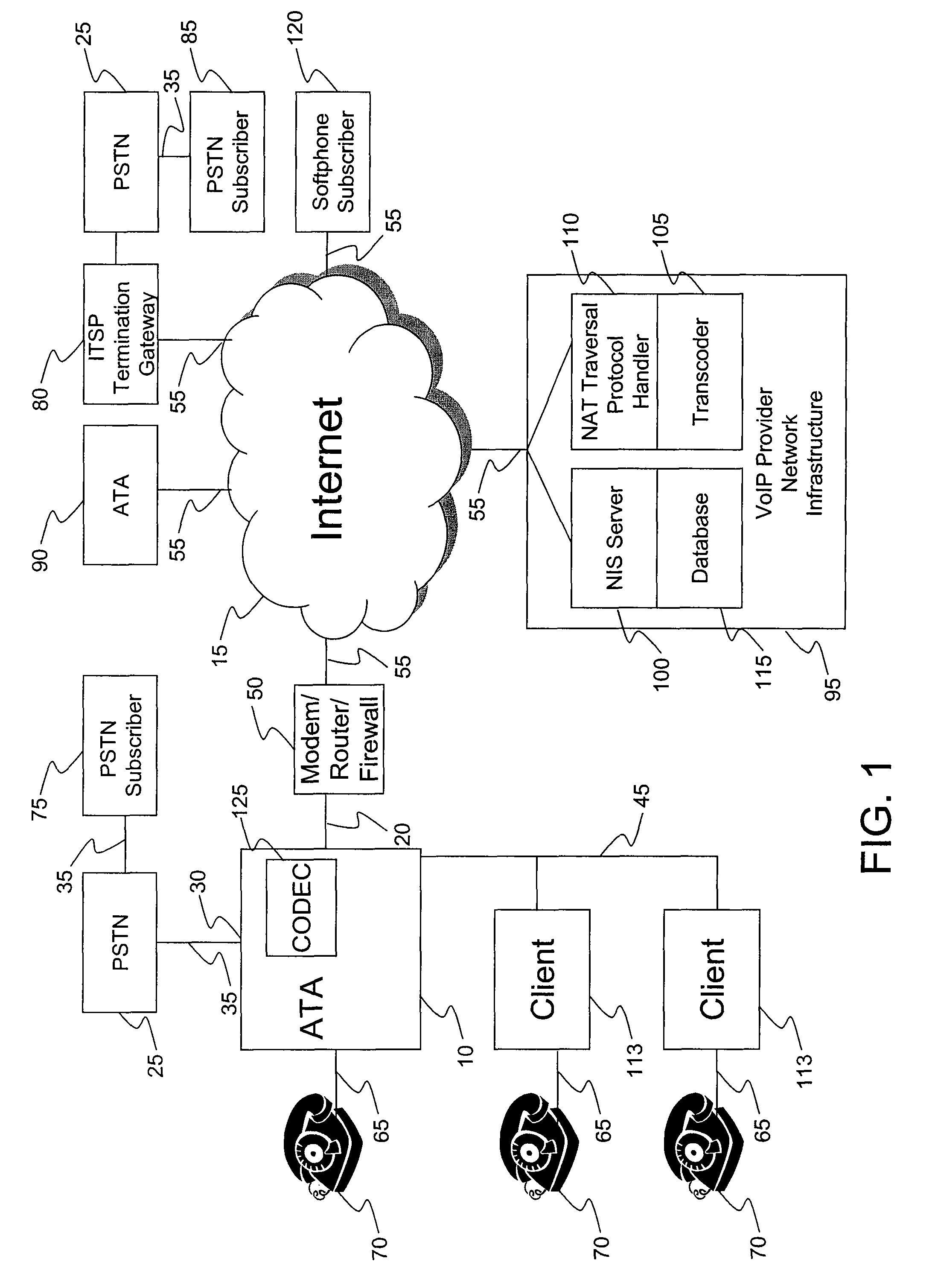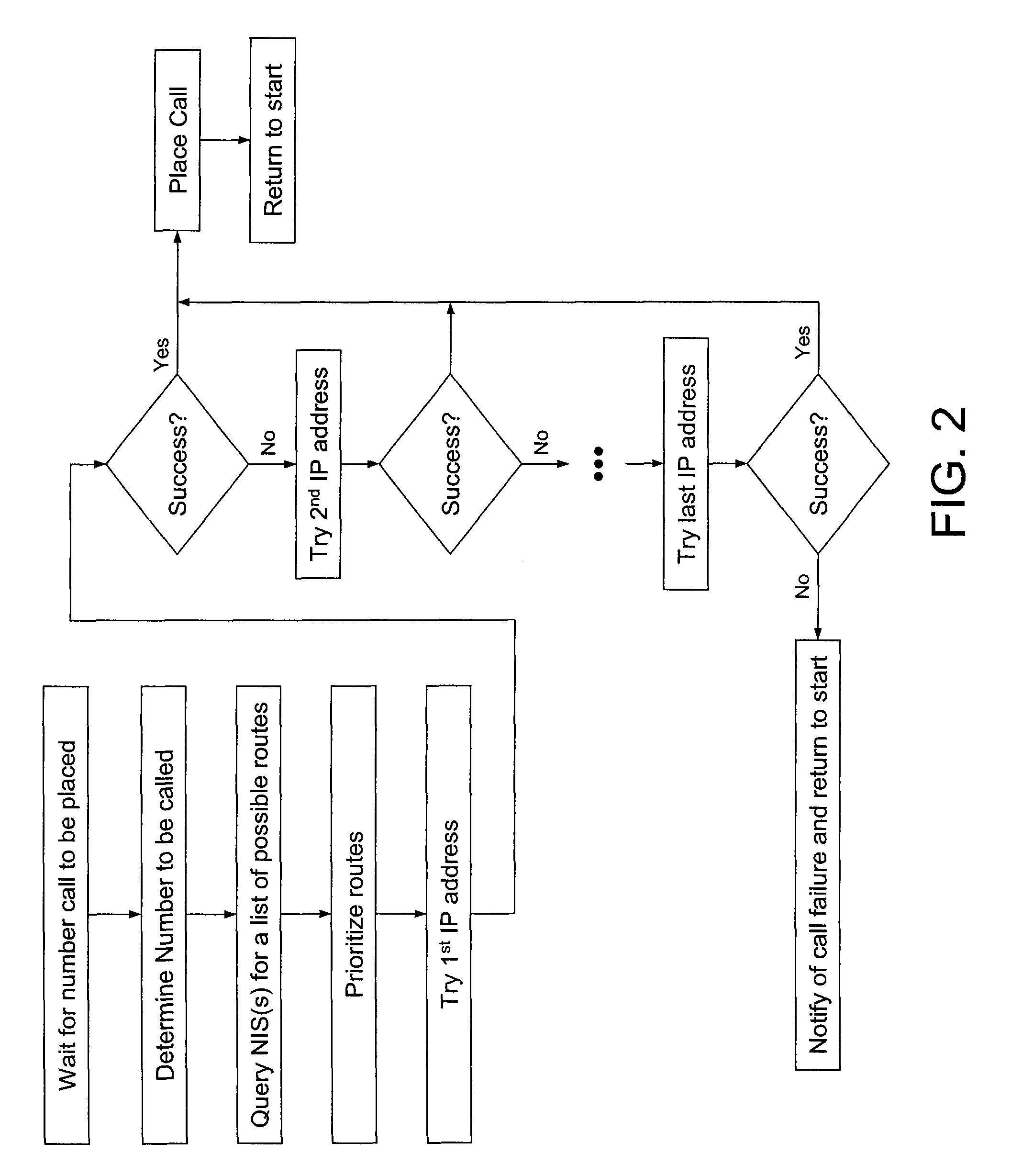Distributed call routing in a VoIP system
a technology of distributed call routing and voip system, which is applied in the field of voice over internet protocol (voip) technology, can solve the problems of slow and unreliable call setup, centralized routing system failure to take advantage of more sophisticated, and impracticality of centralized routing decisions
- Summary
- Abstract
- Description
- Claims
- Application Information
AI Technical Summary
Benefits of technology
Problems solved by technology
Method used
Image
Examples
Embodiment Construction
Overview of System Architecture
[0024]FIG. 1 is a block diagram showing the major system elements and interconnects in an embodiment of the present invention. In brief, embodiments of the present invention provide distributed intelligent routing for calls initiated by an ATA 10, which is located at a subscriber site. The subscriber may be referred to as a customer or user. Equipment at the subscriber site is often referred to in the industry as CPE (customer premises equipment). The ATA may place (and receive) calls over a broadband packet network 15 such as the Internet through a network connection 20, or possibly over the PSTN 25 through an optional foreign exchange office (FXO) port 30 connected to a landline 35. As will be discussed below, the ATA may also be connected to a number of client devices 40 over a subscriber-site (local area) network 45 (e.g., HPNA, Ethernet, DECT, wireless).
[0025]The VoIP subscriber connects ATA 10 to the network connection 20 connected through a mode...
PUM
 Login to View More
Login to View More Abstract
Description
Claims
Application Information
 Login to View More
Login to View More - R&D
- Intellectual Property
- Life Sciences
- Materials
- Tech Scout
- Unparalleled Data Quality
- Higher Quality Content
- 60% Fewer Hallucinations
Browse by: Latest US Patents, China's latest patents, Technical Efficacy Thesaurus, Application Domain, Technology Topic, Popular Technical Reports.
© 2025 PatSnap. All rights reserved.Legal|Privacy policy|Modern Slavery Act Transparency Statement|Sitemap|About US| Contact US: help@patsnap.com



